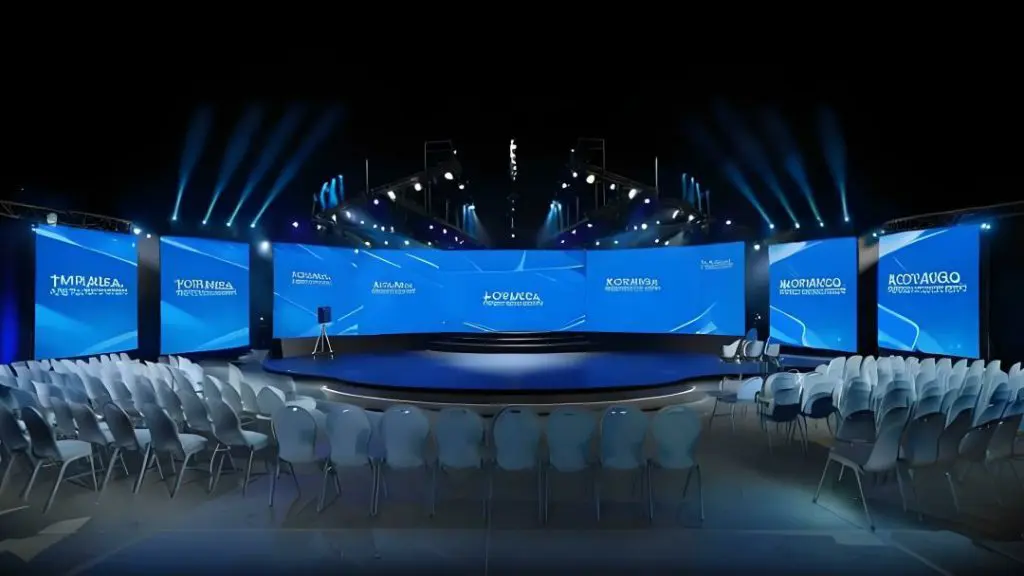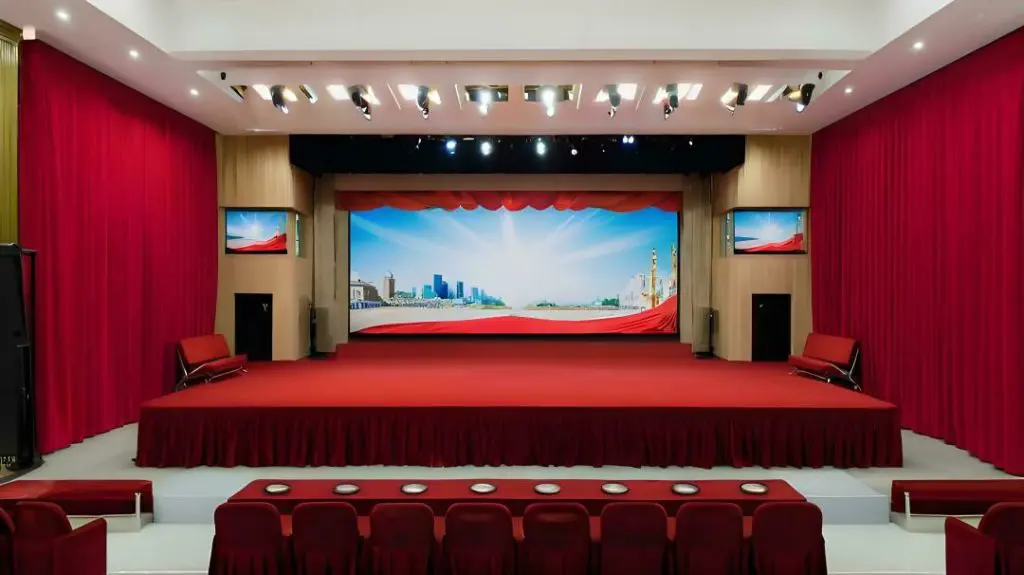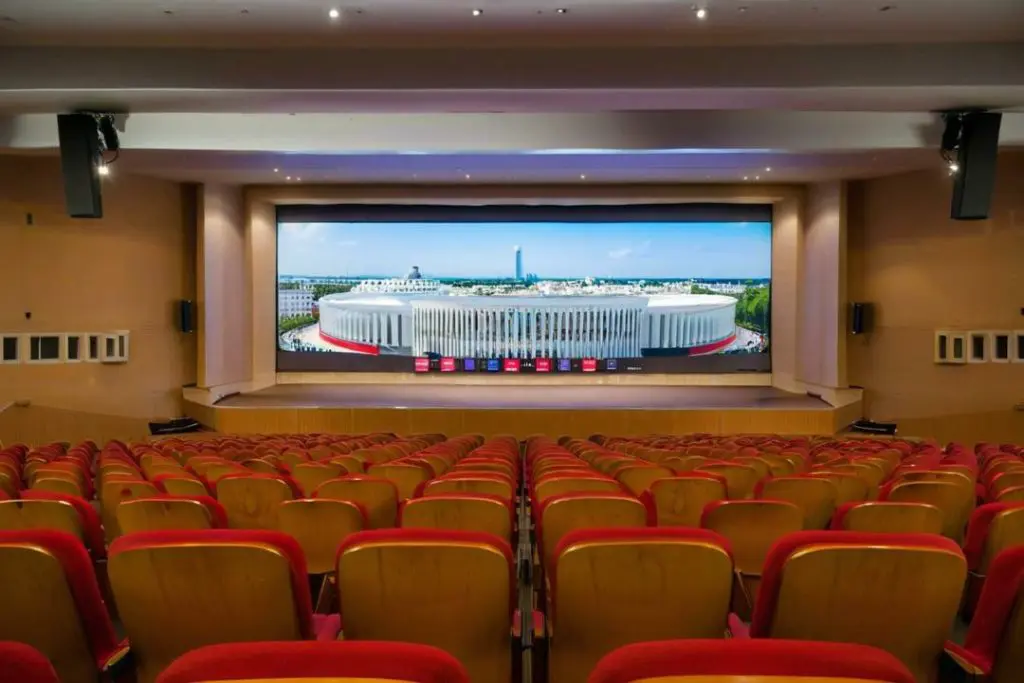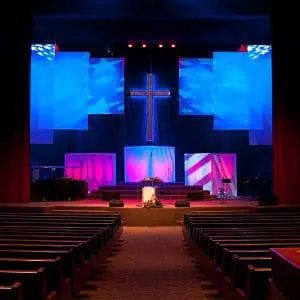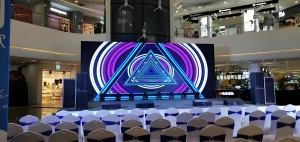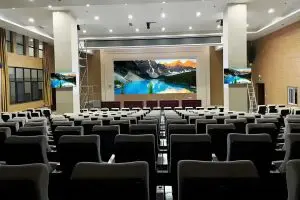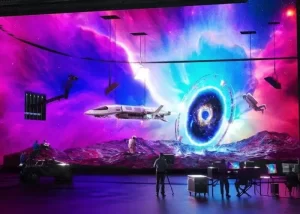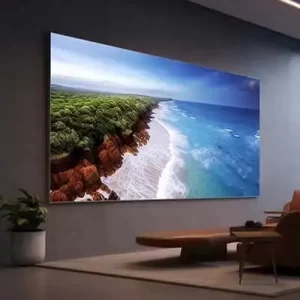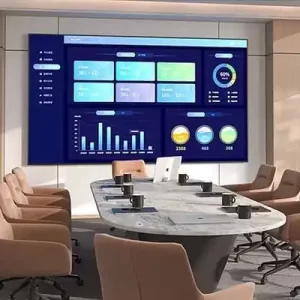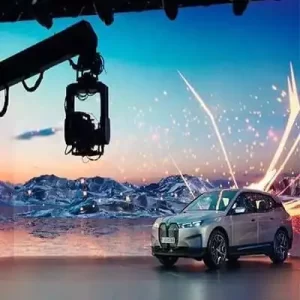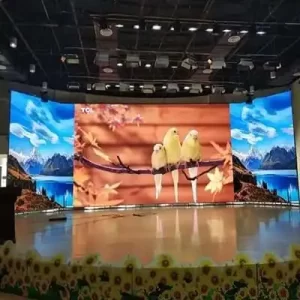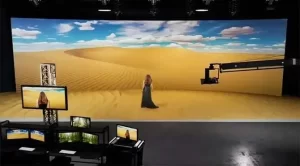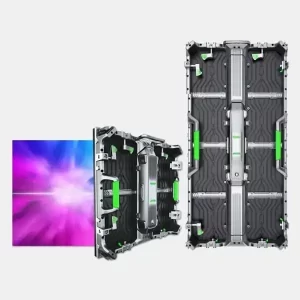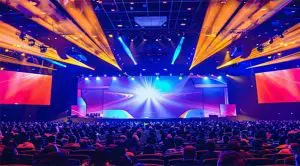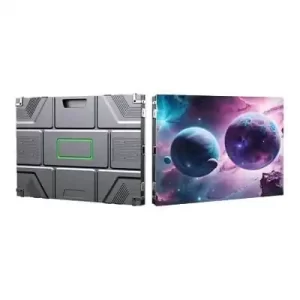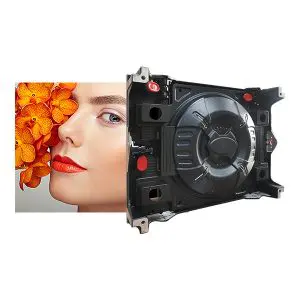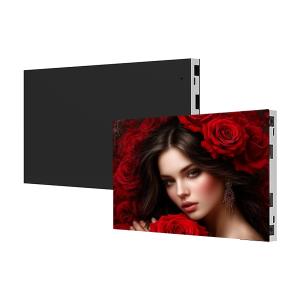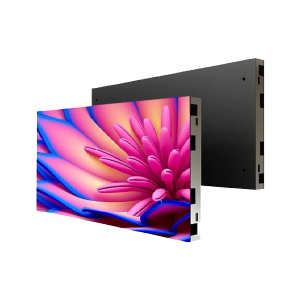An LED wall for an auditorium is a large, seamless display made of modular LED panels that provides high-resolution visuals for a wide range of events. From conferences and presentations to performances and ceremonies, LED walls are an essential feature in modern auditoriums, offering unmatched brightness, clarity, and flexibility. Unlike traditional projection systems, LED walls provide superior image quality, large-scale visibility, and immersive experiences, making them a valuable investment for any venue.
In this article, we’ll explore the benefits, applications, types, and features of LED walls in auditoriums and why they are becoming a staple in event technology.
What Is an LED Wall for an Auditorium ?
An LED wall is a display system made up of modular LED panels that seamlessly combine to create a large, continuous screen. These walls are designed for indoor venues like auditoriums, where they deliver vibrant, high-definition visuals to large audiences. They are highly customizable in terms of size, resolution, and configuration, allowing venues to adapt them for various events and purposes.
Why Are LED Walls Important in Auditoriums ?
LED walls are critical for auditoriums because they:
- Provide bright, clear visuals that are visible even in well-lit environments.
- Offer seamless, gap – free displays for an immersive viewing experience.
- Are versatile and suitable for a wide range of events, from corporate presentations to live performances.
- Enhance engagement by enabling dynamic content like videos, animations, and live feeds.
Benefits of LED Walls in Auditoriums
LED walls offer numerous advantages over traditional displays like projectors or LCD screens. Here’s why they are a game-changer for auditoriums:
1. High-Quality Visuals
LED walls deliver superior image quality with:
- High brightness levels for clear visibility, even in bright lighting.
- Vibrant colors and deep contrast for lifelike visuals.
- High resolutions, such as 4K or 8K, ensuring sharp, detailed images.
2. Seamless Display
Unlike projectors or traditional screens, LED walls are made of modular panels that fit together without visible gaps, creating a smooth and uninterrupted viewing experience.
3. Wide Viewing Angles
LED walls maintain image quality across a wide range of viewing angles, ensuring that everyone in the auditorium, from the front row to the back, has a clear view of the content.
4. Versatility for Multiple Events
LED walls are suitable for a variety of events, including:
- Corporate conferences showcasing presentations, charts, and videos.
- Theatrical performances with immersive digital backdrops.
- Live concerts displaying real-time feeds of performers or artistic visuals.
- Educational events, like lectures and graduations, with clear communication of key information.
5. Real-Time Content Display
LED walls are perfect for live events as they can:
- Display real-time video feeds of speakers, performers, or participants.
- Broadcast live streams from remote locations for hybrid events.
- Show instant replays or highlights during performances or ceremonies.
6. Energy Efficiency
Modern LED technology is energy – efficient, reducing operational costs compared to traditional projection systems.
7. Long Lifespan
LED walls are durable and designed for long-term use, making them a cost-effective investment for auditoriums.
Applications of LED Walls in Auditoriums
LED walls can be used in various ways to enhance the functionality and visual appeal of an auditorium. Here are some popular applications:
1. Stage Backdrops
LED walls are often installed as digital backdrops for the stage, where they:
- Display event – specific visuals, such as branding, themes, or logos.
- Act as a dynamic background for theatrical performances or concerts.
- Create immersive environments with animated or scenic visuals.
2. Presentations and Conferences
LED walls are ideal for corporate and educational events, where they:
- Display slides, videos, and charts in high resolution.
- Allow for interactive presentations with real – time updates.
- Provide a professional and modern look for conferences or seminars.
3. Live Streaming
For events with large audiences or hybrid formats, LED walls can:
- Stream close-up shots of speakers, performers, or participants.
- Broadcast live feeds from remote locations or online participants.
- Ensure that every audience member has a clear view of the action.
4. Performances and Entertainment
In entertainment events, LED walls:
- Enhance concerts, plays, and dance performances with creative visuals and effects.
- Display pre-recorded or live video content to complement the performance.
- Create dramatic lighting and ambiance with interactive animations.
5. Hybrid and Virtual Events
LED walls play a key role in hybrid and virtual events by:
- Displaying live video calls or virtual participants.
- Hosting interactive sessions, such as polls or Q&A segments.
- Integrating with video conferencing platforms to connect remote audiences.
6. Branding and Advertising
During sponsored events, LED walls can:
- Display sponsor logos, advertisements, or promotional videos.
- Highlight event-specific branding, such as hashtags or slogans.
- Provide an additional revenue stream by allowing partners to advertise on the screen.
Types of LED Walls for Auditoriums
The type of LED wall you choose depends on the size of your auditorium, the type of events you host, and your budget. Below are some common types of LED walls:
1. Flat LED Walls
- Best For: Standard stage backdrops and presentations.
- Features:
- Simple and straightforward design.
- Seamless, high-resolution visuals.
2. Curved LED Walls
- Best For: Immersive environments and creative stage designs.
- Features:
- Flexible panels that can be shaped into curved displays.
- Ideal for panoramic visuals and unique layouts.
3. Transparent LED Walls
- Best For: Modern and futuristic auditorium designs.
- Features:
- Semi-transparent panels that blend with the venue’s architecture.
- Lightweight and easy to install near windows or glass walls.
4. Floor LED Walls
- Best For: Interactive performances or creative stage effects.
- Features:
- Durable, impact-resistant surface for foot traffic.
- Can display animations or highlight specific areas of the stage.
5. Modular LED Walls
- Best For: Customizable setups for different events.
- Features:
- Panels that can be rearranged to fit various configurations.
- Easy to expand or reduce in size based on event requirements.
Key Features to Consider
When selecting an LED wall for your auditorium, prioritize the following features:
1. Pixel Pitch
The pixel pitch determines the resolution and clarity of the screen. For auditoriums, a pixel pitch of P1.5–P3 is ideal for sharp visuals, even at close viewing distances.
2. Brightness
Choose an LED wall with appropriate brightness levels:
- Indoor Auditoriums: Brightness levels of 800–1,500 nits to ensure visibility in controlled lighting.
- Outdoor Auditoriums: Brightness levels of 3,000–5,000 nits for clear visuals in sunlight.
3. High Refresh Rate
A high refresh rate (at least 3,840 Hz) ensures smooth motion and flicker-free visuals, which is especially important for live streaming and video content.
4. Wide Viewing Angles
Ensure the LED wall has wide viewing angles so that all audience members, regardless of their seating position, can clearly see the screen.
5. Seamless Design
Choose modular panels that fit together seamlessly to create a smooth display with no visible gaps or lines between panels.
6. Easy Integration
Look for LED walls that integrate easily with your existing audio-visual systems, including sound equipment, cameras, and control software.
Cost of LED Walls for Auditoriums
The cost of an LED wall depends on factors such as size, resolution, and features. Below is a general price range:
| LED Wall Type | Pixel Pitch | Cost per m² (USD) | Best For |
|---|---|---|---|
| Flat LED Wall | P1.5–P3 | $1,000–$2,000 | Stage backdrops and presentations. |
| Curved LED Wall | P2–P4 | $1,000–$3,000 | Immersive and creative designs. |
| Transparent LED Wall | P3–P7 | $1,000–$2,500 | Modern and futuristic designs. |
| Floor LED Wall | P3–P6 | $1,000–$3,000 | Interactive stage effects. |
| Modular LED Wall | P1.5–P4 | $1,500–$2,500 | Customizable configurations. |









